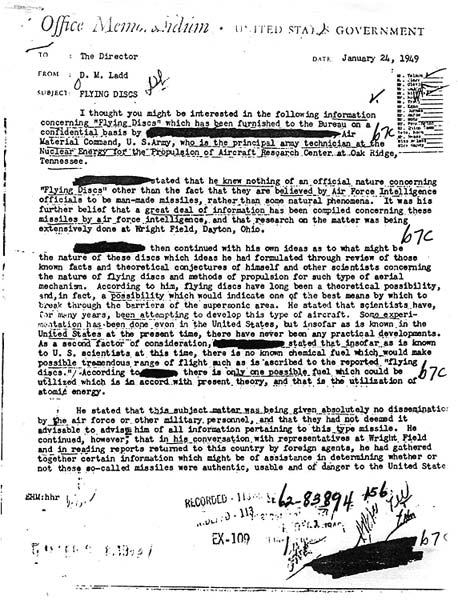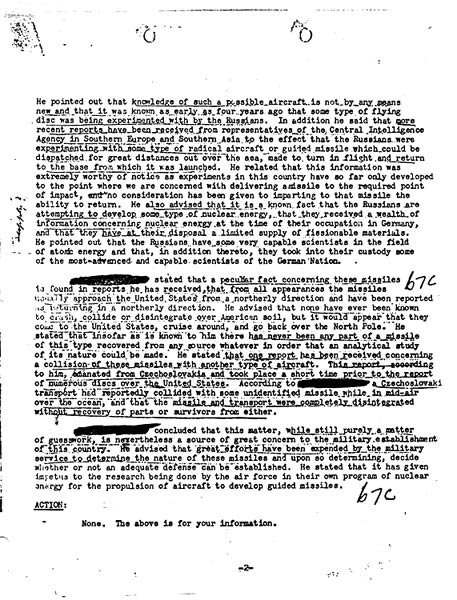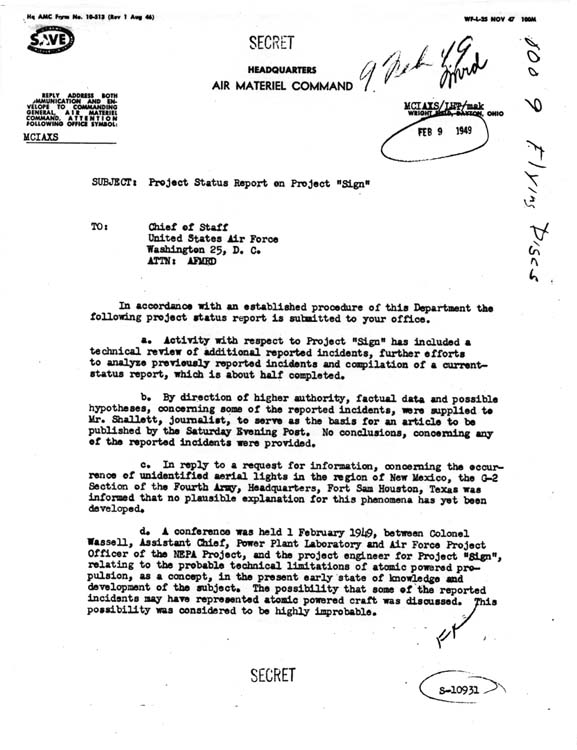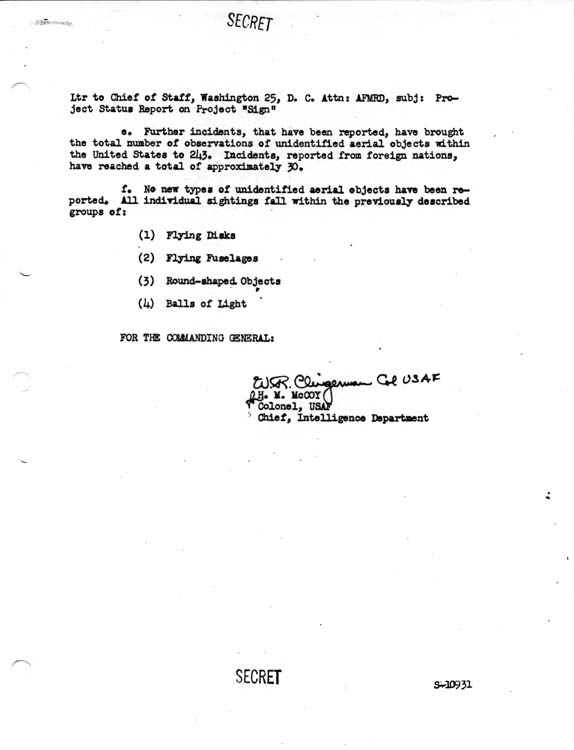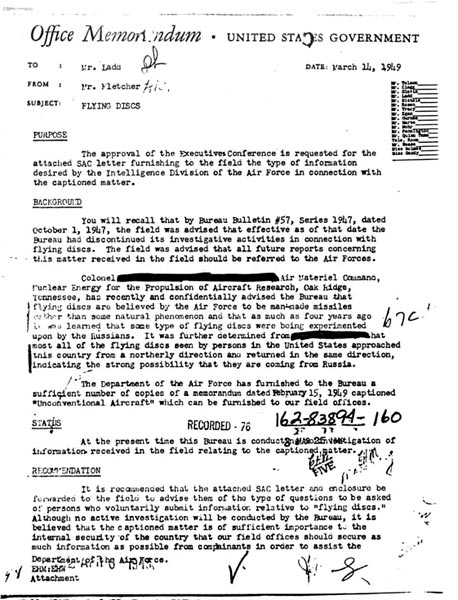NEPA and Project SIGN
In October 1947, just four months after the major "Flying Disc" sighting wave of the previous summer, Wright Field's Air Materiel Command Technical Intelligence Division issued a document called an "EEI" - for "Essential Elements of Information" - designed to provide direction to military attaches, field intelligence agents and other technical intelligence forces as to what a "Flying Disc" might be, assuming it was a man-made aircraft.
The "Flying Saucer EEI" was a rather amazing document by any standard, describing a disc or elliptical aircraft using technology that was at the outer limits of the concepts being investigated by US engineers at the time.
The section of the EEI describing the suspected powerplant of the aircraft was particularly intriguing, raising the possibility that the Saucer might utilize either turbojets, ramjets, pulse jets (like the German V-1 cruise missile), rockets, or some combination of these. Moreover, some form of "atomic energy engine" might explain the tremendous performance exhibited by the objects.
The propulsion issue was really the sticking point over the concept that the Saucers were Soviet. If they actually were somewhere between the size of a fighter plane and a medium transport, how could they possibly have the range to reach the US from Soviet territory, particularly if they flew at near sonic speeds? There were only a few options available, given the state of the aeronautical art in 1947-8. One possibility raised by AMC was the theory that the craft were launched near the US from some type of transport platform (submarines, lighter-than-air craft, conventional bombers or aircraft carriers were mooted). Another line of thinking was that some technology known to the US but as yet undeveloped, such as jet-suction Boundary Layer Control, might have been perfected by the Soviets to drastically reduce the drag experienced by a high-speed aircraft of unique shape. There was also the possibility that the objects used a radical new type of engine that provided enormous endurance at high speed. At the outer limits of believability, some type of nuclear powerplant, of unspecified design, might explain this conundrum.
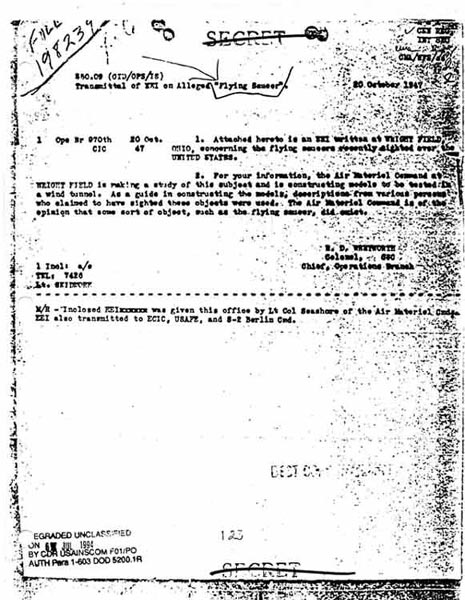 |
Transmittal of EEI on Alleged "Flying Saucer" 20 October 1947
1. Attached hereto is an EEI written at WRIGHT FIELD, OHIO, concerning the flying saucers recently sighted over the UNITED STATES. 2. For your information, the Air Materiel Command at WRIGHT FIELD is making a study of this subject and is constructing models to be tested in a wind tunnel. As a guide in constructing the models, descriptions from various persons who claimed to have sighted these objects were used. The Air Materiel Command is of the opinion that some sort of object, such as the flying saucer, did exist. R. D. WENTWORTH Colonel, CIC Chief, Operations Branch |
 |
Power Plant Item a. Information is needed regarding the propulsion system used in the aircraft. Possible types of engines that could be employed include: (1) Reciprocating (piston type)... (2) Jet propulsion engines including turbo jets, rockets, ramjets, pulse jets or a combination of all four. (3) Nuclear propulsion (atomic energy). Atomic energy engines would probably be unlike any familiar type of engine, although atomic energy might be employed in combination with any of the above types. Aircraft would be characterized by lack of fuel systems and fuel storage space. The power plant would likely be an integral part of the aircraft and could possibly not be distinguished as an item separate from the aircraft. |
